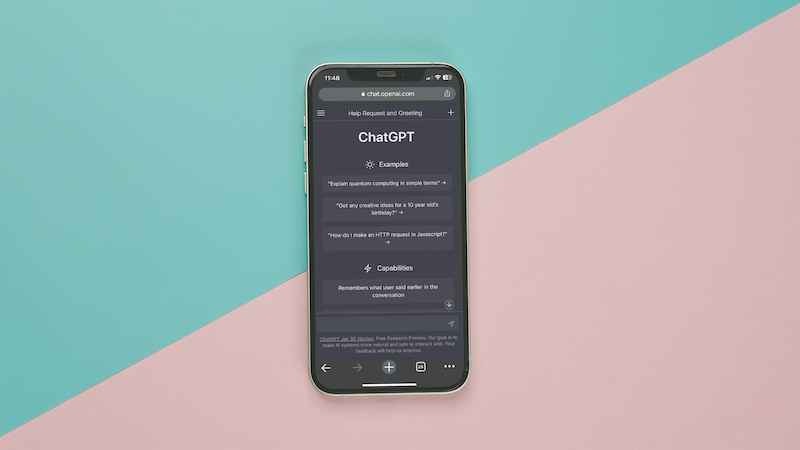
Published: Dec 3, 2024
7 Simple Steps to Draft a Blog Post Using ChatGPT in 2025
7 Simple Steps to Draft a Blog Post Using ChatGPT in 2025
Hey there, fellow wordsmiths! I’ve been around the blogging block a few times, and let me tell you, ChatGPT has been a total game-changer. It’s like having a brainstorming buddy who never gets tired (or asks for coffee breaks). So, ready to turn your blank page anxiety into blogging ecstasy? Let’s dive in!
TLDR:How can ChatGPT help me write better blog posts?
1️⃣ Can ChatGPT generate entire blog posts for me?
While ChatGPT can generate content, it’s best used as a collaborative tool. It can help with ideation, outlining, and drafting, but your unique voice and expertise are crucial for creating authentic, engaging posts.
2️⃣ How does ChatGPT improve my writing process?
ChatGPT streamlines your writing by offering instant ideas, helping overcome writer’s block, and providing structure. It can suggest titles, create outlines, and even help with research, allowing you to focus on adding your personal insights and style.
3️⃣ Is using ChatGPT for blogging considered cheating?
Not at all! Using ChatGPT is like having a super-smart assistant. It’s a tool to enhance your creativity, not replace it. The key is to use it ethically, always fact-check, and infuse your own voice and expertise into the content.
Table of Contents
- Step 1: Brainstorm Your Topic
- Step 2: Craft a Catchy Title
- Step 3: Create Your Outline
- Step 4: Research and Gather Information
- Step 5: Write Your Draft
- Step 6: Edit and Refine
- Take a Breather
- Read It Out Loud
- Cut the Fluff
- Check Your Flow
- Spice Up Your Language
- Add Some Personality
- Double-Check Your Facts
- Optimize for SEO
- Break It Up
- Check Your Links
- Proofread, Proofread, Proofread
- Get a Second Opinion
- Refine Your Visuals
- Craft a Killer Conclusion
- Fine-Tune Your Call-to-Action
- Step 7: Optimize for SEO
- Keyword Magic: Sprinkle, Don’t Dump
- Meta Description: Your 160-Character Sales Pitch
- Headers: Not Just Pretty Faces
- Alt Text: Describe It Like Your Grandma’s On The Phone
- Internal Linking: Share The Love
- External Linking: Play Nice With Others
- URL Structure: Keep It Simple, Stupid
- Mobile Optimization: Think Thumbs, Not Mouse
- Load Speed: Faster Than You Can Say “Chalk Paint”
- Schema Markup: Speak Robot
- Fresh Content: Keep It Updated
- Bonus Tip: Video Content
- Bonus: ChatGPT Blog Writing Best Practices
Step 1: Brainstorm Your Topic
Alright, let’s kick things off with some serious brainstorming! This is where ChatGPT really shines – it’s like having a never-ending ideas fountain right at your fingertips. Here’s how to get those creative juices flowing:
Start with a Broad Prompt
First, give ChatGPT a general idea of what you’re looking for. Something like:
“Give me 10 blog post ideas about [your niche]”
For example, I tried:
“Give me 10 blog post ideas about sustainable living”
And boom! ChatGPT spit out a goldmine of ideas, including:
- Upcycling 101: Transforming Trash into Treasure
- The Ultimate Guide to Zero-Waste Grocery Shopping
- Minimalism and Sustainability: A Perfect Match?
Dive Deeper with Follow-Up Prompts
Once you’ve got some general ideas, it’s time to dig deeper. Pick an idea that catches your eye and ask ChatGPT to expand on it. For instance:
“Give me 5 subtopics for a blog post about upcycling furniture”
ChatGPT might suggest:
- Chalk Paint Techniques for Vintage Dressers
- Turning Old Ladders into Stylish Bookshelves
- Repurposing Wooden Pallets into Outdoor Seating
Find Your Unique Angle
Now, here’s where YOU come in. Look at these ideas and think about your own experiences or perspectives. Maybe you’ve got a hilarious story about a DIY disaster that turned into an unexpected masterpiece. Or perhaps you’ve discovered a super easy upcycling hack that your readers would love.
Try prompting ChatGPT with something like:
“Help me brainstorm unique angles for a blog post about upcycling furniture for beginners”
You might get suggestions like:
- “From Dumpster to Designer: My $0 Living Room Makeover”
- “5 Upcycling Projects Even Your Cat Can’t Ruin”
- “Upcycling for the Utterly Unhandy: No Power Tools Required”
Consider Your Audience
Always keep your target readers in mind. Are they busy parents? College students? Retirees with time on their hands? Ask ChatGPT to tailor ideas to your specific audience:
“Give me blog post ideas about upcycling for busy parents with young kids”
ChatGPT might suggest:
- “10-Minute Upcycling Projects to Do During Naptime”
- “Kid-Friendly Furniture Upcycling: Transforming Outgrown Cribs”
- “Upcycled Toy Storage Solutions: From Chaos to Organized Bliss”
Cross-Pollinate Ideas
Don’t be afraid to mix and match concepts. You can ask ChatGPT to combine ideas in unexpected ways:
“Combine upcycling furniture with eco-friendly cleaning for a unique blog post idea”
ChatGPT might come up with:
“DIY Natural Cleaners for Your Upcycled Treasures: Keeping It Green from Start to Finish”
Refine and Choose
Finally, once you’ve got a bunch of ideas, it’s decision time. Pick the one that gets you most excited – the one where you’re already mentally outlining paragraphs. That enthusiasm will shine through in your writing.
Remember, ChatGPT is your springboard, not your ghostwriter. Use these ideas as a launching pad for your own creativity. The best blog posts come from a mix of AI assistance and your unique voice and experiences. Now go forth and create some awesome content!
Step 2: Craft a Catchy Title
Alright, now that we’ve got our topic nailed down, it’s time to whip up a title that’ll make your readers go, “Ooh, I gotta check this out!” Let’s dive into how ChatGPT can help us craft some seriously click-worthy headlines.
The Power of a Great Title
First things first – your title is like the cover of a book. It’s the first impression, the hook, the thing that makes someone think, “Hmm, maybe I should read this instead of watching another cat video.” So let’s make it count!
Brainstorming with ChatGPT
Start by giving ChatGPT a basic idea of your blog post. For example:
“Generate 10 catchy titles for a blog post about upcycling old furniture for beginners”
ChatGPT might come back with gems like:
- “Trash to Treasure: Your Guide to Furniture Upcycling Magic”
- “Old Chair, New Tricks: Upcycling for the Totally Clueless”
- “From Drab to Fab: 5 Upcycling Projects Even Your Grandma Could Do”
Refining Your Options
Now, let’s say you like the general idea of the second title, but it’s not quite there yet. You can ask ChatGPT to refine it:
“Give me 5 variations of the title ‘Old Chair, New Tricks: Upcycling for the Totally Clueless’ that are more specific and engaging”
ChatGPT might suggest:
- “Couch Potato to DIY Pro: Upcycling Furniture Without Breaking a Sweat”
- “Secondhand to Sensational: Your Foolproof Guide to Furniture Flipping”
- “Ikea Who? Transform Thrift Store Finds into Designer Dupes”
Incorporating Keywords
Don’t forget about SEO! If you’re targeting specific keywords, ask ChatGPT to work them in:
“Incorporate the keyword ‘DIY furniture makeover’ into these title options”
You might get:
- “DIY Furniture Makeover Magic: From Garage Sale Junk to Living Room Jewels”
- “The Lazy Person’s Guide to DIY Furniture Makeovers That Wow”
Testing for Emotional Impact
Great titles often tap into emotions. Ask ChatGPT to analyze the emotional impact of your options:
“Analyze the emotional appeal of these titles and suggest improvements:
- ‘DIY Furniture Makeover Magic: From Garage Sale Junk to Living Room Jewels’
- ‘The Lazy Person’s Guide to DIY Furniture Makeovers That Wow’”
ChatGPT might respond:
“Title 1 appeals to a sense of transformation and discovery, but could be more relatable. Try: ‘Junkyard to Jewel Box: Your DIY Furniture Makeover Adventure’
Title 2 targets a specific audience (lazy people) which could be both appealing and off-putting. A more inclusive option: ‘No-Sweat DIY: Furniture Makeovers for the Crafting-Challenged’”
The Final Touch: Your Personal Spin
Now, here’s where YOU come in. Look at these AI-generated titles and think about how you can add your unique flair. Maybe you’re known for your sarcastic humor or your love of puns. Don’t be afraid to tweak the suggestions to match your style.
For instance, if you’re all about budget-friendly tips, you might land on:
“Champagne Chic on a Beer Budget: DIY Furniture Flips That’ll Fool Your Friends”
Or if you’re targeting busy parents:
“Nap Time Transformations: 30-Minute Furniture Makeovers for Multitasking Parents”
Test It Out
Finally, don’t just settle on the first title that sounds good. A/B testing is your friend! Ask a few people which title they’d be more likely to click on, or use social media polls to gauge interest.
Remember, the perfect title is a blend of ChatGPT’s algorithmic smarts and your unique voice and understanding of your audience. So mix, match, and most importantly, have fun with it! After all, if you’re excited about your title, chances are your readers will be too.
Step 3: Create Your Outline
Alright, let’s roll up our sleeves and dig into the meat of our blog post - the outline! This is where ChatGPT really shines, helping us structure our thoughts and create a roadmap for our writing journey. Let’s break it down:
Kickstart Your Outline with ChatGPT
First things first, let’s get ChatGPT to give us a basic structure. Try something like:
“Create an outline for a blog post about DIY furniture makeovers for beginners”
ChatGPT might come back with:
-
- Why DIY furniture makeovers are awesome
- Who this guide is for
-
- Essential tools for beginners
- Budget-friendly material options
Preparing Your Workspace
- Setting up a safe DIY area
- Protecting your floors and surfaces
-
- Assessing difficulty levels
- Picking the right piece of furniture
Step-by-Step Makeover Process
Troubleshooting Common Issues
- Dealing with stubborn stains
- Fixing minor damages
Finishing Touches and Maintenance
- Sealing your work
- Tips for long-lasting results
Conclusion
- Recap of key points
- Encouragement to start their first project
Refine and Personalize
Now, let’s make this outline truly yours. Ask ChatGPT to expand on specific sections that you want to emphasize:
“Expand on the ‘Choosing Your First Project’ section with more detailed subpoints”
ChatGPT might suggest:
- Choosing Your First Project

- Assessing your skill level honestly
- Thrift store vs. flea market finds: pros and cons
- Spotting diamond-in-the-rough furniture pieces
- Avoiding common beginner pitfalls in furniture selection
Add Your Personal Touch
This is where your experience comes in handy. Maybe you’ve got a funny story about your first makeover disaster, or a clever hack you’ve discovered. Let’s work that in:
“Add a section about personal experiences with DIY furniture makeovers”
ChatGPT could suggest:
- Real-Life DIY Adventures
- My first makeover: The Craigslist dresser disaster
- Unexpected wins: How I accidentally created a shabby chic masterpiece
- Lessons learned the hard way (so you don’t have to!)
Incorporate Visuals and Examples
Don’t forget to plan for visuals! Ask ChatGPT to help you brainstorm ideas for images or examples to include:
“Suggest visual elements to include in the blog post about DIY furniture makeovers”
ChatGPT might propose:
- Before and after photos of transformed furniture pieces
- Step-by-step photo tutorial of a simple makeover project
- Infographic on different types of paint finishes
- Video demonstration of proper sanding techniques
Think About Your Reader’s Journey
Consider how your reader will move through your post. Ask ChatGPT to help you create transitions between sections:
“Provide transition ideas between the ‘Tools and Materials’ and ‘Preparing Your Workspace’ sections”
ChatGPT could offer:
“Now that we’ve got our DIY arsenal ready, let’s talk about setting up your makeover mission control. Trust me, a well-prepped workspace can mean the difference between a stress-free project and a paint-splattered disaster zone!”
Don’t Forget the Call-to-Action
Every great blog post should end with a bang - and a clear next step for your readers. Ask ChatGPT for ideas:
“Suggest a strong call-to-action for the end of the DIY furniture makeover blog post”
ChatGPT might recommend:
“Ready to transform that old nightstand into a Pinterest-worthy piece? Share your before pics in the comments below, and let’s cheer each other on as we dive into the world of furniture flipping!”
Remember, this outline is your roadmap, not your straitjacket. As you write, feel free to deviate if inspiration strikes. The best posts often come from a mix of solid planning and spontaneous creativity. Now, armed with this killer outline, you’re ready to bring your DIY furniture makeover guide to life!
Step 4: Research and Gather Information
Alright, it’s time to dig deep and get those juicy details that’ll make your blog post shine! Research is where the rubber meets the road, and with ChatGPT as your trusty sidekick, you’ll be unearthing golden nuggets of info in no time.
Leveraging ChatGPT for Initial Research
First things first, let’s get ChatGPT to give us a starting point. Try something like:
“Provide key points to research for a blog post about DIY furniture makeovers for beginners”
ChatGPT might suggest:
- Popular furniture upcycling techniques

- Best paints and finishes for different furniture materials
- Common mistakes in DIY furniture restoration

- Eco-friendly upcycling practices

- Tools essential for furniture makeovers

Diving Deeper with Specific Queries
Now, let’s zoom in on each point. For example:
“What are the top 3 paints recommended for wood furniture makeovers?”
ChatGPT might respond:
- Chalk paint - Known for its matte finish and no-prep application
- Milk paint - Great for achieving a vintage look
- Acrylic paint - Versatile and durable for various furniture types
Fact-Checking and Multiple Sources
Remember, while ChatGPT is a great starting point, it’s crucial to verify information. Use it to guide your research, then cross-reference with reliable sources. For instance:
- Bob Vila - Offers expert advice on furniture paints
- This Old House - Provides detailed comparisons of furniture paints
- Popular Woodworking - Compares milk paint and chalk paint
Incorporating Statistics and Data
To add credibility to your post, sprinkle in some relevant stats. Ask ChatGPT:
“Find recent statistics about the popularity of DIY furniture makeovers”
Then verify these stats with reputable sources. For example, according to a 2022 Statista report, 55% of U.S. homeowners undertook DIY home improvement projects, including furniture makeovers, in the past year.
Gathering Real-Life Examples
Nothing beats real-world experience. Reach out to DIY communities or scroll through Reddit for authentic stories. You might find gems like:
“I once tried to upcycle an old dresser with spray paint in my tiny apartment. Let’s just say my security deposit and I parted ways that day. Always work in a well-ventilated area, folks!” - Reddit user DIYDisaster101
Organizing Your Research
As you gather info, keep it organized. Create a simple table to track your sources:
| Topic | Source | Key Points | URL |
|---|---|---|---|
| Chalk Paint | Bob Vila | No sanding needed, adheres to most surfaces | https://www.bobvila.com/articles/best-paint-for-furniture/ |
| Eco-friendly Upcycling | EPA  |
Reduces waste, saves resources | https://www.epa.gov/recycle/reducing-and-reusing-basics |
Staying Current
DIY trends evolve fast. Check recent Pinterest boards or Instagram hashtags for the latest furniture makeover trends. You might discover that Japandi style is all the rage or that people are going crazy for color-blocking their old dressers.
Expert Insights
Don’t be shy about reaching out to experts. Maybe there’s a local furniture restoration pro in your area who’d be willing to share some tips. Or slide into the DMs of that DIY influencer you follow - you’d be surprised how many are happy to offer advice!
Remember, thorough research is what sets apart a good blog post from a great one. It’s not just about quantity, but quality and relevance. Use ChatGPT to guide your research journey, but always go the extra mile to verify, personalize, and add that human touch to your information gathering.
Now, armed with all this juicy info, you’re ready to craft a DIY furniture makeover guide that’ll have your readers reaching for their sandpaper and paintbrushes in no time!
Step 5: Write Your Draft
Alright, it’s showtime! We’ve got our outline, we’ve done our research, and now it’s time to bring this DIY furniture makeover guide to life. Let’s roll up our sleeves and get writing!
Set the Scene
Start by painting a picture (pun intended) for your readers. Maybe something like:
“Picture this: You’re scrolling through Instagram, drooling over gorgeous furniture makeovers, when you glance at that beat-up dresser in the corner of your room. The one you got for $20 at a yard sale three years ago. Suddenly, a lightbulb goes off. Could you transform that eyesore into a showstopper? Spoiler alert: You absolutely can, and I’m here to show you how!”
Break It Down
Remember that outline we crafted? Now’s the time to flesh it out. Let’s tackle each section one by one:
1. Introduction
- Hook your readers with that relatable scenario
- Briefly explain why DIY furniture makeovers are awesome (budget-friendly, eco-conscious, personally satisfying)
- Set expectations: “By the end of this post, you’ll be ready to tackle your first furniture flip like a pro!”
2. Gathering Your Arsenal: Tools and Materials
“Before we dive in, let’s talk about what you’ll need. Don’t worry, you won’t have to rob a Home Depot!”
Essential tools:
(various grits)
(synthetic for smoother finishes)
(trust me, your floors will thank you)
Materials:
(I swear by Zinsser Bulls Eye 1-2-3)
- Paint (We’ll dive into types later, but Rust-Oleum Chalked Paint is a great start)
- Clear topcoat for protection
3. Choosing Your First Project
“Remember, Rome wasn’t built in a day, and neither was that amazing mid-century modern dresser makeover you saw on Pinterest.”
- Start small: A side table or simple chair is perfect for beginners
- Look for solid wood pieces (easier to work with than particleboard)
- Check local thrift stores or Facebook Marketplace for hidden gems
4. Prep Like a Pro
“Prep work might not be glamorous, but it’s the secret sauce to a stellar makeover.”
- Clean thoroughly (I love Krud Kutter for greasy buildup)
- Remove hardware
- Sand, sand, sand (start with 80-grit, work your way up to 220 for a smooth finish)
- Wipe away dust with a tack cloth
5. Paint Like You Mean It
“Now for the fun part – watching your piece transform before your eyes!”
- Apply thin, even coats (patience is key!)
- Let each coat dry completely (check the paint can for drying times)
- For a distressed look, sand lightly between coats
- Seal with a clear topcoat for durability
6. The Final Touches
“It’s all in the details, folks!”
- Reattach hardware (or upgrade with new knobs for an extra pop)
- Style your piece (nothing says ‘look what I made!’ like a strategic succulent placement)
Keep It Real
Sprinkle in some personal anecdotes throughout. For example:
“Full disclosure: My first attempt at distressing ended up looking less ‘shabby chic’ and more ‘attacked by wolverines’. But hey, we learn by doing, right?”
Troubleshooting Tips
Address common issues your readers might face:
- Brush strokes showing? Try a foam roller for a smoother finish
- Paint not sticking? You might need to sand more or use a deglosser
- Bleed-through on light colors? Use a stain-blocking primer like Kilz
Wrap It Up
Conclude with an encouraging send-off:
“Remember, every DIY master started somewhere. So grab that dusty old nightstand, channel your inner Joanna Gaines, and get flipping! And hey, if your first attempt doesn’t turn out Instagram-worthy, just call it ‘abstract’ and own it. You’ve got this!”
Call to Action
End with an invitation to engage:
“Ready to tackle your first furniture flip? Drop a comment below with what piece you’re planning to makeover. Let’s cheer each other on in this DIY adventure!”
Remember, this is your first draft. Don’t aim for perfection – just get your ideas down. You can always refine and polish later. The key is to let your personality shine through and create content that’s both informative and fun to read. Now, go forth and write that draft that’ll have your readers itching to upcycle everything in sight!
Step 6: Edit and Refine
Alright, you’ve got your first draft down – woohoo! But don’t pop the champagne just yet. It’s time to polish that baby until it shines. Let’s dive into the nitty-gritty of editing and refining your DIY furniture makeover masterpiece.
Take a Breather
First things first – step away from your draft. I’m serious! Go watch an episode of Fixer Upper, take a walk, or sleep on it. Coming back with fresh eyes is like seeing your piece with a new coat of paint.
Read It Out Loud
This trick is gold. Reading your post aloud helps you catch awkward phrasing, run-on sentences, and spots where you might lose your reader. If you stumble while reading, your readers probably will too.
Cut the Fluff
Be ruthless. If a sentence doesn’t add value, it’s gotta go. Remember, your readers are probably scrolling on their phones while waiting for their chalk paint to dry. Every word counts!
Check Your Flow
Make sure your ideas connect smoothly. Try using transition phrases like:
- “Now that we’ve prepped our piece…”
- “Speaking of sanding…”
- “But wait, there’s more!”
Spice Up Your Language
Swap out boring words for more vivid ones. Instead of “good,” try “game-changing” or “mind-blowing.” But don’t go overboard – we’re aiming for engaging, not a thesaurus explosion.
Add Some Personality
Inject your unique voice. Maybe you’re known for your dad jokes or your tough-love approach. Sprinkle that throughout your post. For example:
“If you skip the sanding step, don’t come crying to me when your paint job looks bumpier than a popcorn ceiling.”
Double-Check Your Facts
This is crucial. Make sure all your information is accurate and up-to-date. Double-check product names, techniques, and any stats you’ve included. For instance, verify that Rust-Oleum is still the go-to brand for chalk paint (spoiler: it is as of 2023).
Optimize for SEO
Without sacrificing readability, make sure you’ve naturally incorporated your target keywords. “DIY furniture makeover,” “upcycling furniture,” and “chalk paint techniques” should flow seamlessly in your content.
Break It Up
Long paragraphs are the enemy of readability. Break up your text with:
- Bullet points
- Short paragraphs (2-3 sentences max)
- Subheadings (H3, H4)
- Pull quotes for emphasis
Check Your Links
Make sure all your links are working and go to the right places. Nothing’s worse than clicking on what you think is a link to Annie Sloan chalk paint and ending up on a cat video (okay, maybe that’s not the worst thing).
Proofread, Proofread, Proofread
Typos are the bane of credibility. Use tools like Grammarly or Hemingway Editor to catch those pesky errors. But don’t rely solely on them – your human eye is irreplaceable.
Get a Second Opinion
Ask a friend, family member, or fellow DIY enthusiast to read your post. They might catch things you missed or have questions that you should address in your content.
Refine Your Visuals
If you’re including images (and you should!), make sure they’re high-quality and properly captioned. A before-and-after shot of a dresser transformation can be worth a thousand words.
Craft a Killer Conclusion
End with a bang! Summarize your key points and leave your readers feeling inspired. Maybe something like:
“Remember, that sad, neglected side table isn’t just a piece of furniture – it’s a canvas for your creativity. So grab your sandpaper, channel your inner Chip and Joanna, and let’s turn some trash into treasure!”
Fine-Tune Your Call-to-Action
Make sure your CTA is clear and compelling. Encourage readers to share their own makeover projects or ask questions in the comments.
“Show off your furniture flips in the comments below! And if you run into any snags, drop your questions – our DIY community is here to help!”
Remember, editing isn’t just about fixing grammar and typos. It’s about refining your message, enhancing your voice, and making sure every word earns its place in your post. Take your time with this step – it’s what separates the good posts from the great ones.
Now, go give that draft the makeover it deserves. Your readers (and that soon-to-be-fabulous furniture) are waiting!
Step 7: Optimize for SEO
Alright, DIY dynamos, we’ve crafted a killer post about furniture makeovers, but now it’s time to make sure the search engines fall in love with it too. Let’s get our SEO groove on and make this post shine brighter than a freshly polished brass knob!
Keyword Magic: Sprinkle, Don’t Dump
First things first, let’s talk keywords. We’re targeting “DIY furniture makeover,” but don’t go crazy. Stuffing keywords like you’re filling a Thanksgiving turkey is so 2010. Instead, use them naturally throughout your post.
For example, instead of: “DIY furniture makeover is great for DIY furniture makeover enthusiasts who love DIY furniture makeover projects.”
Try: “Embarking on a DIY furniture makeover can transform not just your space, but your DIY confidence too!”
Meta Description: Your 160-Character Sales Pitch
Craft a meta description that’s catchier than the “after” photos of your latest upcycling project. Something like:
“Transform trash to treasure with our ultimate DIY furniture makeover guide. Learn pro tips, avoid rookie mistakes, and unleash your inner Joanna Gaines!”
Headers: Not Just Pretty Faces
Your H2s and H3s aren’t just for breaking up text - they’re SEO goldmines. Use them wisely:
- H2: “Essential Tools for Your DIY Furniture Makeover”
- H3: “Choosing the Right Sandpaper for Your Project”
- H4: “Grit Matters: From 80 to 220 and Beyond”
Alt Text: Describe It Like Your Grandma’s On The Phone
For every image, write alt text as if you’re describing it to your grandma over the phone. It helps visually impaired readers and gives search engines more context. For example:
“Before and after images of a mid-century modern dresser makeover, showing transformation from dark wood to teal chalk paint finish with gold hardware.”
Internal Linking: Share The Love
Link to other relevant posts on your site. Got a post about choosing paint colors or upcycling ideas? Link to them! It keeps readers on your site longer and helps search engines understand your site structure.
External Linking: Play Nice With Others
Don’t be shy about linking to high-quality external sources. It shows you’ve done your homework. For instance, link to This Old House when discussing paint types or Popular Woodworking for advanced techniques.
URL Structure: Keep It Simple, Stupid
Your URL should be clear and include your main keyword. For example: www.yourblog.com/diy-furniture-makeover-guide
Not: www.yourblog.com/post-123456-category-diy-subcategory-furniture?id=98765
Mobile Optimization: Think Thumbs, Not Mouse
Remember, most of your readers are probably on mobile. Break up long paragraphs, use bullet points, and make sure your images resize properly. Test your post on your phone - if your thumbs get tired from scrolling, it needs more breaks.
Load Speed: Faster Than You Can Say “Chalk Paint”
Large images can slow down your page load speed faster than you can say ”distressed finish.” Use a tool like TinyPNG to compress images without losing quality.
Schema Markup: Speak Robot
Use schema markup to help search engines understand your content better. For a how-to post like this, you might use HowTo schema. It’s like giving Google a Cliff’s Notes version of your post.
Fresh Content: Keep It Updated
Search engines love fresh content. Revisit your post every few months to update any outdated information. Maybe Annie Sloan has released a new chalk paint color, or you’ve discovered a game-changing sanding technique. Keep it current!
Bonus Tip: Video Content
If you’re feeling adventurous, consider adding a short video tutorial. According to Wyzowl, 69% of people prefer watching short videos to learn about a product or service. Plus, it can significantly increase your time on page - a metric search engines love!
Remember, SEO isn’t about tricking search engines - it’s about creating valuable, easily digestible content that answers your readers’ questions. If you focus on that, the SEO magic will follow.
Now, go forth and optimize! Your perfectly SEO’d DIY furniture makeover guide is about to climb the SERP ranks faster than you can say ”upcycled pallet coffee table“!
Bonus: ChatGPT Blog Writing Best Practices
Hey there, fellow wordsmiths! Let’s talk about leveling up your blogging game with ChatGPT. This AI sidekick can be a total game-changer, but like any powerful tool, it’s all about how you use it. So, grab your favorite caffeinated beverage, and let’s dive into some pro tips for making ChatGPT your secret weapon in crafting killer blog posts.
Nail Your Prompts
First things first: garbage in, garbage out. The quality of ChatGPT’s output depends heavily on your input. Here’s how to craft prompts that’ll make ChatGPT sing:
Be Specific: Instead of “Write about furniture,” try “Write an engaging introduction for a blog post about upcycling vintage dressers for modern bedrooms.”
Set the Tone: Tell ChatGPT the vibe you’re going for. “Write in a casual, friendly tone as if you’re chatting with a friend over coffee” will yield very different results from “Write in a professional, authoritative tone suitable for a business blog.”
Define Your Audience: Are you writing for DIY newbies or seasoned crafters? Specify this in your prompt to get more targeted content.
Use the “Act As” Technique: Try prompts like “Act as an experienced interior designer giving advice on furniture upcycling.” This can lead to more nuanced, expert-sounding content.
Layer Your Requests
Don’t try to get everything in one go. Build your content piece by piece:
- Start with an outline
- Expand each section
- Ask for specific examples or case studies
- Request transitions between sections
For instance:
1. "Create an outline for a blog post about upcycling vintage dressers."
2. "Expand on the 'Choosing Your Dresser' section from the outline."
3. "Provide a case study of a successful vintage dresser upcycling project."
4. "Write a transition from the 'Choosing Your Dresser' section to 'Prep Work'."Fact-Check Everything
Remember, ChatGPT is like that friend who’s always confident but not always right. According to a study by Stanford University, large language models like ChatGPT can produce false information with high confidence. So, treat its output as a starting point, not gospel.
For example, if ChatGPT suggests using milk paint for a specific project, double-check that it’s actually the best choice by consulting expert sources like This Old House or Bob Vila.
Inject Your Personal Voice
ChatGPT is great, but it’s not you. After getting your base content, go through and sprinkle in your unique flavor:
- Add personal anecdotes: “I once tried to upcycle a dresser in my tiny NYC apartment. Let’s just say my neighbors weren’t thrilled with the 2 AM sanding session.”
- Throw in some humor: “Choosing the right sandpaper is like dating. Sometimes you need something rough to start, but you always want to finish smooth.”
- Include your own tips and tricks: “Pro tip: I always keep a stash of Krud Kutter on hand. It’s like a magic eraser for furniture prep!”
Use ChatGPT for Brainstorming
Stuck on ideas? ChatGPT is like a brainstorming partner that never gets tired. Try prompts like:
- “Generate 10 unique angles for a blog post about upcycling vintage dressers.”
- “What are some common mistakes people make when upcycling furniture?”
- “Suggest 5 surprising uses for an old dresser besides storage.”
Leverage ChatGPT for SEO
While ChatGPT isn’t a replacement for solid SEO tools, it can help you brainstorm:
- “Suggest 10 long-tail keywords related to furniture upcycling.”
- “Generate 5 SEO-friendly title options for a blog post about dresser makeovers.”
- “Write a meta description for a blog post about upcycling vintage dressers, including the keyword ‘DIY furniture makeover’.”
Polish and Refine
Use ChatGPT to help refine your content:
- “Suggest ways to make this paragraph more engaging and conversational.”
- “Rewrite this sentence to be more concise while keeping the main point.”
- “Provide three alternative ways to start this section that would grab the reader’s attention.”
Remember the Human Touch
At the end of the day, your readers come for your unique perspective and expertise. According to a survey by Sprout Social, 64% of consumers want brands to connect with them. That human connection is something AI can’t replicate.
So, use ChatGPT as a tool to enhance your writing, not replace your voice. Think of it as your brainstorming buddy, your research assistant, and your editor all rolled into one. But you’re still the star of the show.
The Bottom Line
ChatGPT is like the power tools of the writing world. It can help you work faster and often better, but it’s not going to build the house for you. You still need to bring the vision, the expertise, and that special something that makes your blog uniquely yours.
So go forth, chat with your AI buddy, and create some blogging magic. Just remember, at the end of the day, it’s your name on that post. Make sure it sounds like you – just the most efficient, inspired version of you possible.
Now, I want to hear from you! Drop a comment below with your favorite ChatGPT blogging hack. Let’s share the wealth and level up our blogging game together!




